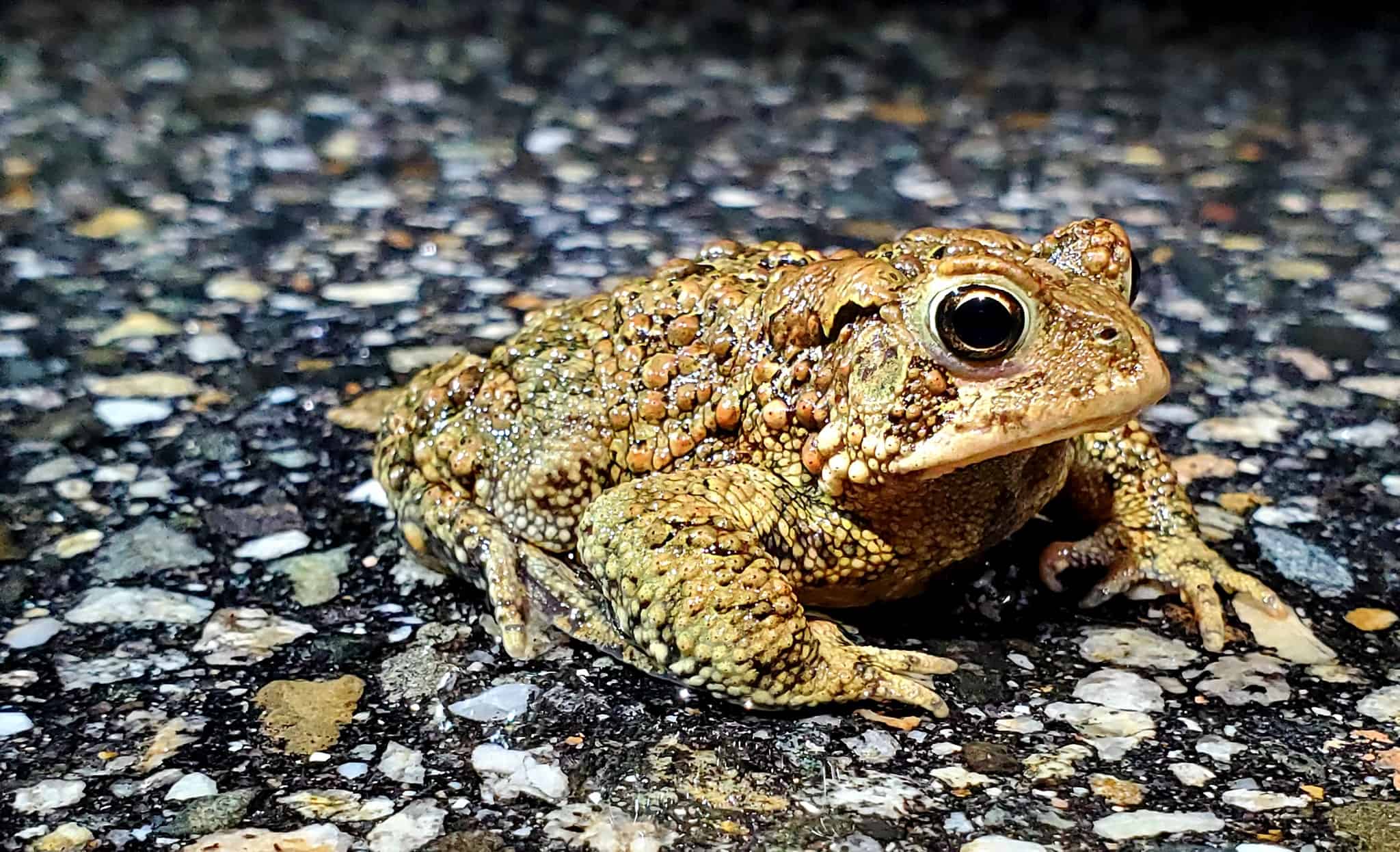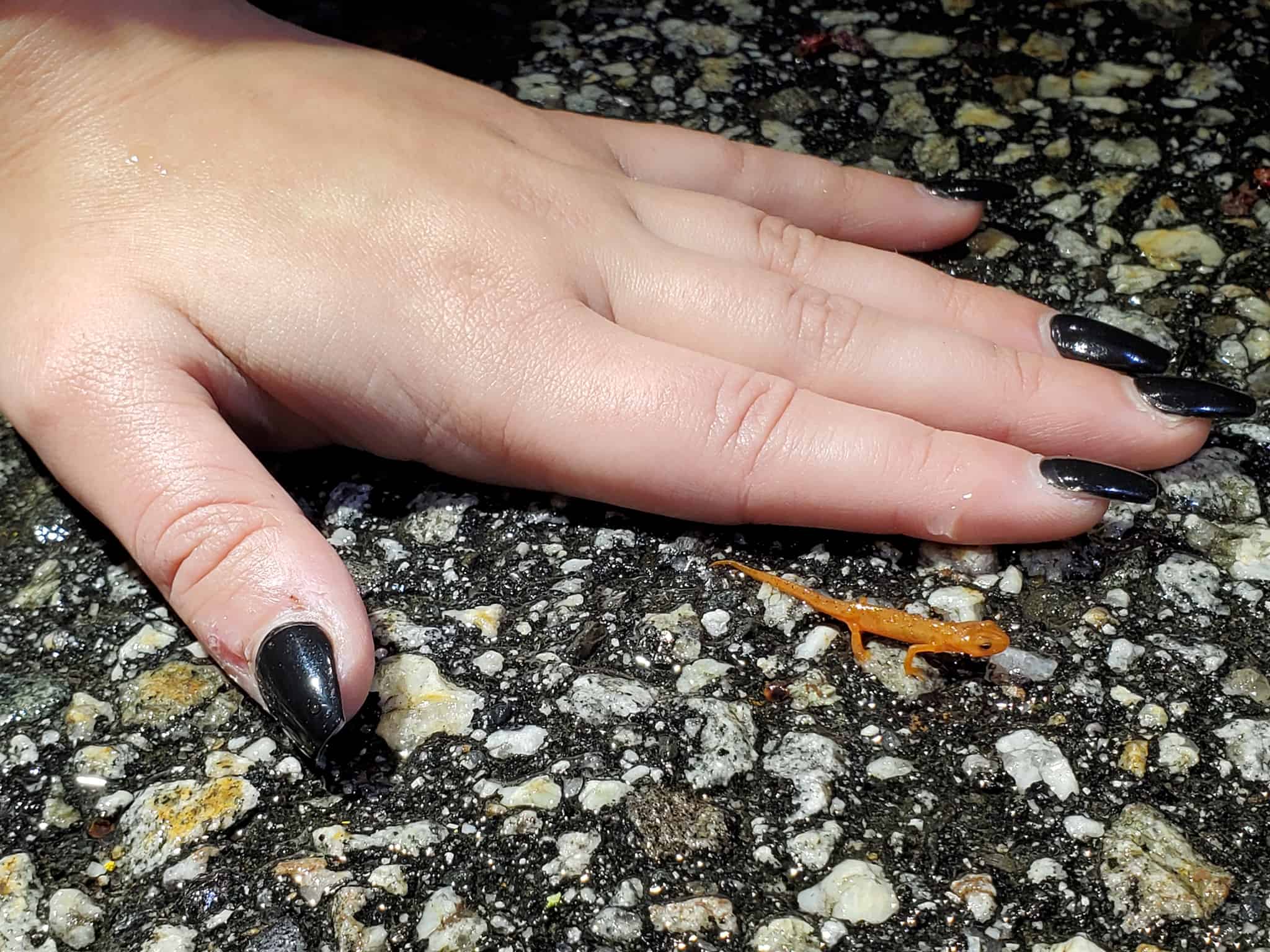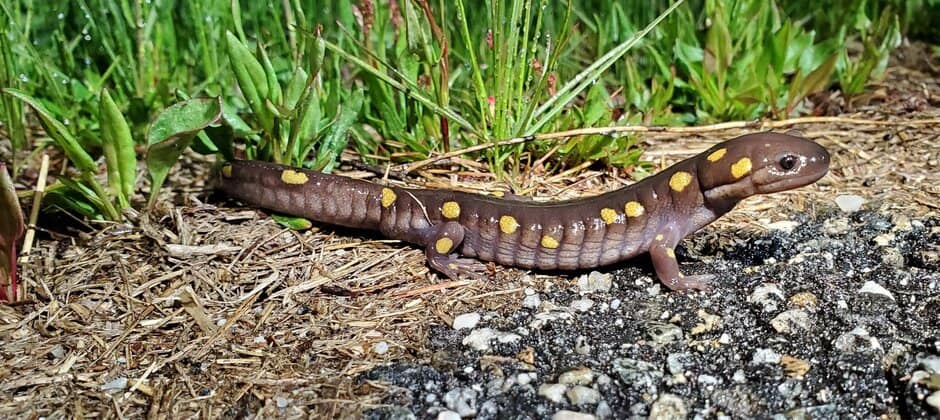Share this article
Cars killed less amphibians during COVID-19 shutdown
A “big night” only happens a couple of times a year, and conditions have to be just right. It has to be springtime, when the weather has risen above 45 degrees Fahrenheit at night, allowing the ground to thaw. And, of course, it has to be raining.
If all these stars align, it’s the perfect time for herpers to get out and survey amphibians that wait all winter for conditions like these to wake up from hibernation and begin migrating to their breeding ponds.
“You have endless amounts of frogs and salamanders moving,” said Gregory LeClair, a master’s student in ecology at the University of Maine.
LeClair has been running “Maine Big Night,” a community science project that occurs during these special times for amphibians, for several years in the state. He started counting amphibians while earning his undergraduate degree at Unity College in 2018. With other students and professors, the team counted amphibians along the roads near the college town. By 2020, he expanded the efforts, eliciting the help of nearly 200 volunteers across the state.
That year, volunteers quickly noticed something different as soon as they got out in the field. Previous surveys usually showed that about one out of every two amphibians discovered was dead, squished by the tires of cars and trucks on the roads they surveyed. But during that year’s survey, which happened smack in the beginning of the COVID-19 pandemic shutdown, the volunteers were finding a lot more amphibians alive on the roads.
“We had a hunch that mortality rates were a lot lower—there were certainly less people on the road,” LeClair said.
From 2018 to 2021, the volunteers have gathered sightings on 7,749 amphibians, living and dead. In 2020, they had 2,100 sightings. While there are 17 known species of amphibians found in Maine, the surveys so far have turned up 16 of them. But some are more common than others.

An American toad (Anaxyrus americanus). Credit: Jeff Parmelee
Migratory species are the most common to turn up on roads during surveys, which is unsurprising as these animals need to move between hibernation areas and breeding areas. The most common is the spring peeper (Pseudacris crucifer), a dime-sized chorus frog known for its characteristic chirp. Other commonly found species are wood frogs (Lithobates sylvaticus), spotted salamanders (Ambystoma maculatum) and blue-spotted salamanders (Ambystoma laterale), which are a species of concern in Maine. Non-migratory species also turned up in their surveys, such as green frogs (Lithobates clamitans) and eastern redbacked salamanders (Plethodon cinereus).
Back in the lab, the researchers compared what they’d noticed anecdotally during the shutdown. Then, they ran models looking at the numbers of living versus dead amphibians over the years. In a study published recently in Conservation Science and Practice, they confirmed that the number of dead amphibians was indeed down during the pandemic compared to numbers in the springs of 2018, 2019 and 2021.
In 2019, for example, the researchers estimated a mortality rate of about 20%. In the spring during the pandemic, the mortality rate dove down to only 8%. In the most recent year, as traffic increased, it jumped back up to 15%.
The models showed that of the amphibians they studied, frog mortality declined the most during the pandemic year. But LeClair said that finding may be biased.
The most common frog, spring peepers, are tiny and blend in well with the road when alive. When dead, their brighter innards and bellies make them easier to detect. In addition, the volunteers for these surveys don’t just count amphibians—they also help them cross the road when found alive. LeClair believes that volunteers may just be better at finding salamanders while they’re alive—and helping them cross the road.
“We suspect we were really good at saving the salamanders and missing the frogs,” he said.
But still, with the same surveys conducted each year, the peepers showed up dead less often during the pandemic year.

An eastern newt (Notophthalmus viridescens) Credit: Jeff Parmelee
LeClair said their study had similar findings to other research showing that roadkill of other species also decreased during lockdowns. Data on roadkill tracked by the U.S. Department for Transportation, for example, showed drops during the pandemic for most of their categories of animals.
“The trend isn’t just for amphibians—it’s more than likely for other wildlife as well,” he said.
The findings also show the extent that a lack of traffic can affect amphibian survival rates. He suggests that by reducing traffic for a single night each spring, the number of amphibian roadkill could drastically be reduced. Where species of concern are involved, it may be worth redirecting traffic during those nights.
Header Image: Spotted salamanders were among the species found crossing roads in Maine. Credit: Jeff Parmelee








